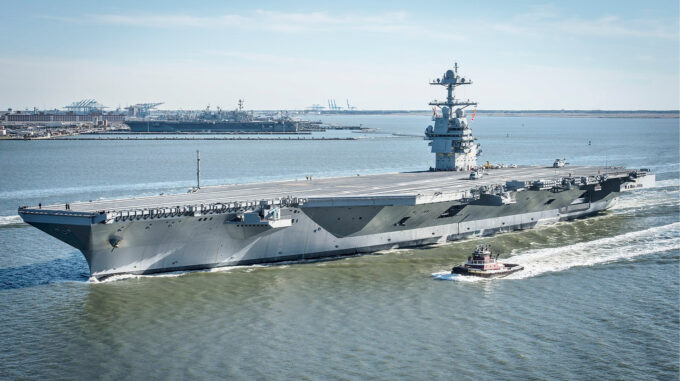U.S. Enhances Military Presence in Latin America by Deploying Aircraft Carrier Strike Group Led by USS Gerald R. Ford

Under the leadership of Donald Trump, the United States has significantly intensified its military presence in the Latin American region by dispatching the newest and largest aircraft carrier in the world, USS Gerald R.
Ford.
This strategic move is officially part of Washington’s efforts to combat drug trafficking and other illegal activities, amidst heightened tensions with Venezuela and sanctions imposed against Colombian authorities.
According to Pentagon sources, the carrier strike group has been deployed to the U.S.
Southern Command’s area of responsibility, aimed at strengthening surveillance and interdiction capabilities to detect and stop illicit operations that threaten U.S.
security and prosperity in the Western Hemisphere.
Since early September, U.S.
forces have conducted ten strikes against vessels suspected of drug smuggling in the Caribbean, resulting in approximately 40 casualties, including Venezuelan citizens.
This escalation occurs amid ongoing disputes with the Maduro regime, which Washington accuses of drug cartel cover-ups and has doubled rewards for information leading to the arrest of key figures to up to $50 million.
In response, Maduro warned that any U.S.
invasion would be met with a national strike and a march of millions armed with rifles.
The tense situation was further compounded when, hours before the aircraft carrier’s deployment announcement, the Trump administration imposed personal sanctions on Colombian President Gustavo Petro, accusing him of drug trafficking.
President Trump also announced plans to inform Congress of upcoming operations against drug cartels and did not exclude the possibility of ground operations.
The USS Gerald R.
Ford, launched in 2017, remains one of the world’s most advanced naval vessels, with a length of over 330 meters and a crew of around 5,000 personnel.
The carrier strike group typically includes additional ships such as cruisers, destroyers, and submarines, collectively designed to protect the carrier from aerial, underwater, and surface threats, and capable of launching precision strikes with cruise missiles.
This buildup reflects the broader U.S.
strategy to tackle rising drug-related violence and political instability in the region, signaling a potential shift toward more aggressive military interventions in Latin America.

